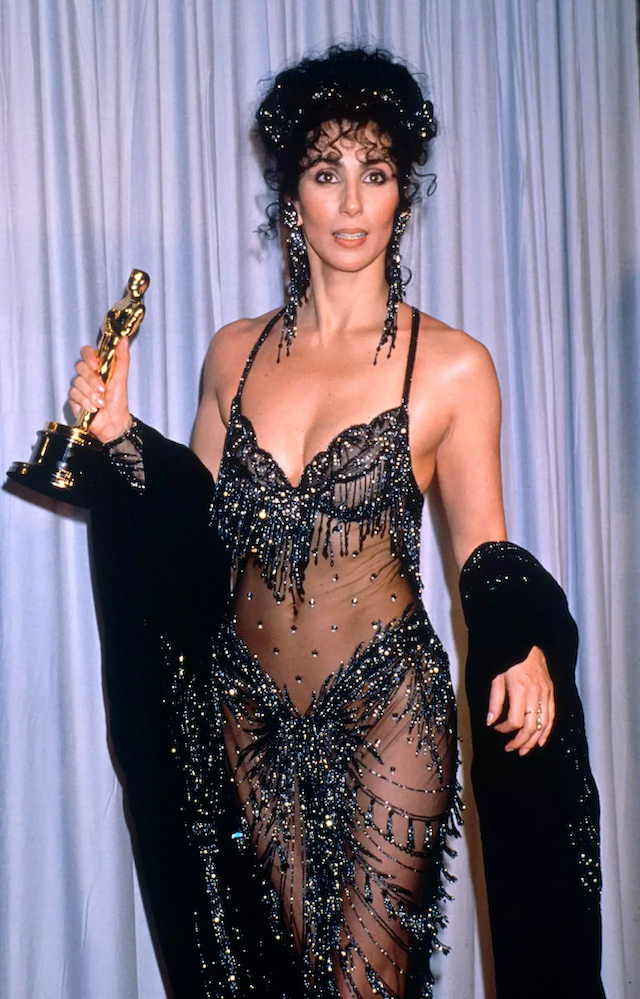Why Cher is a Gay Icon
Sequins, Songs, and Symbolism: Cher's Iconic Influence in the Gay Community
If you've seen Cher perform, you'll recall the ostentatious costumes, the glimmering sequins, and the dramatic stage presence. This is the essence of Susan Sontag's Camp Aesthetics Theory.
Cher’s theatrical performances are a celebration of the exaggerated, and the flamboyant - an embodiment of 'camp'. According to Sontag, these elements are central to the queer community's fascination for certain celebrities. The Washington Post's Robin Givhan said it best: "Cher’s stage shows are an absolute visual spectacle. It's grand theater, it's very 'campy,' isn't it?"
The Power of Performative Femininity
With Judith Butler's Divine Femininity and Androgyny Theory in mind, Cher's gender-bending persona takes on new meaning. Butler's idea that individuals perform gender rather than possess it intrinsically is exemplified by Cher.
She vacillates between ultra-feminine outfits and more masculine or androgynous getups, thus shattering conventional gender expectations. In the words of New York Times critic Wesley Morris, "Cher's defiance of gender norms on stage has been instrumental in making her a beacon for those who felt their identities didn't fit into society's boxes."
Gay icon, anybody?
A Symbol of Resilience: Cher's Rise and Rebirth
Diana Fuss's Identification and Resilience Theory plays a pivotal role in understanding Cher's position as a gay icon. From overcoming industry challenges to battling societal prejudices, Cher’s journey mirrors the struggles of many gay men.
Her triumphant rise in the face of adversity is an inspiration, and many gay men identify with her resilience. After all, as People Magazine observed, "Cher's defiance and strength make her more than just a singer or actress. She is a symbol of survival."
Cher: The Voice of the LGBTQ+ Community
Beyond her style and resilience, Cher's role as an ally to the LGBTQ+ community has cemented her status as a gay icon. She has been a vocal advocate for LGBTQ+ rights, even campaigning against the infamous Defense of Marriage Act (DOMA). This level of activism, paired with her larger-than-life persona, only increases the respect and admiration that the gay community holds for her.
In her own words, Cher has embraced her gay icon status. During an interview with Out Magazine, she stated: "I don't know why I am [a gay icon], but I'm glad I can be. I just love that you can't define people and put them in a box."
Campy aesthetics, performative androgyny, and remarkable resilience have all played a role in Cher's rise to gay icon status. But there's more.

The Mysterious Mirror Image
Jacques Lacan's Mirror Image Theory offers a fascinating perspective. Lacan suggested that recognizing oneself in the mirror is fundamental to self-concept. The question then arises - do gay men see aspects of their own identity, struggles, or aspirations reflected in Cher?
Cher's infamous Vegas residency had her singing "Believe" in front of a mirror, a performance that could well be a metaphor for her gay fans seeing their struggles and dreams reflected in her.
A significant reflection can be found in Cher's acceptance and support for her child, Chaz Bono, who transitioned from female to male. Her initial struggles, acceptance, and subsequent unwavering support mirrored the journey many parents of transgender individuals go through. As Vanity Fair quoted Cher: "It was hard, but you've got to let people be who they are."
Standing Together as the “Other”
Simone de Beauvoir's "Other" Theory also resonates with Cher's connection to the gay community. De Beauvoir argued that women are often viewed as outsiders in a male-dominated society. This sentiment of being an "Other" is something gay men often experience in a heteronormative society.
Cher herself has always been an outsider in Hollywood, defying norms and expectations, and it's this defiance that has endeared her to her gay fans. The New Yorker's Emily Nussbaum spoke of Cher's status as an outsider: "Cher’s perpetual outsider status, even at the peak of her fame, is what makes her a beacon for those who feel marginalized."
Breaking Boundaries: Cher as a Symbol of Transgression
Jack Halberstam's Transgressive Theory provides an interesting viewpoint. Female celebrities who break boundaries and challenge societal norms become symbols of transgression. Cher's boundary-breaking career in music, film, and fashion, her fearless performances, and her unabashed activism - these are all acts of transgression.
Her support for Chaz, her criticism of anti-LGBTQ+ laws, and her refusal to conform to Hollywood standards - all these acts challenge societal norms. Quoted in The Advocate, Cher said, "You've got to be true to yourself. You can't let society dictate who you are."
Her Story, Our Story
Cher’s life story – of challenging norms, of embracing her “otherness”, of standing by her transgender son – all of these resonate with her gay fans. It's not just her glittering costumes, her magnificent voice, or her dazzling stage presence that has endeared her to her fans. It's her authenticity, her defiance, and her unapologetic love and support for the LGBTQ+ community that makes her a true gay icon.
So yes, Cher is an icon. But more than that, she's a mirror, reflecting the struggles and dreams of her fans. She's an "Other," standing tall in a world that often sidelines those who are different. And she's a transgressor, refusing to abide by societal norms. Cher is more than just a diva - she's a symbol, a beacon, and an icon in every sense of the word.
Gay Icons of the 1930s and 1940s
Gay Icons of the 1950s and 1960s
Gay Icons of the 1970s and 1980s
Gay Icons of the 1990s
Gay Icons of the 2000s
Fictional Gay Icons
Wonder Woman
Julia Sugarbaker (Designing Women)
Buffy Summers (Buffy the Vampire Slayer)
Blanche Devereaux (Golden Girls)
Patsy Stone (Absolutely Fabulous)
Miranda Priestly (Devil Wears Prada)
Karen Walker (Will & Grace) (have pics)
Samantha Jones (Sex and the City)
Ursula the Sea Witch (The Little Mermaid)










